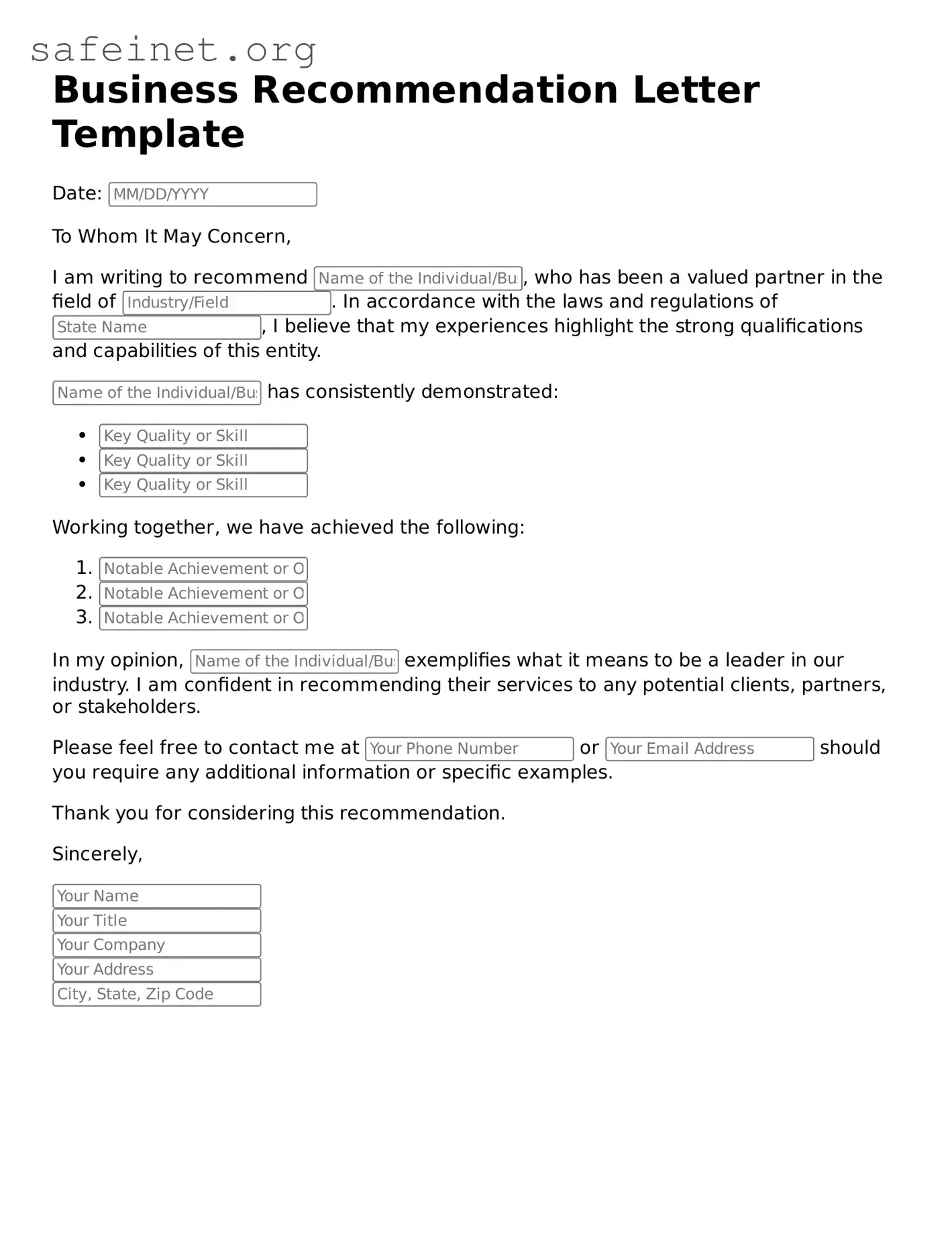Official Business Recommendation Letter Document
A Business Recommendation Letter form is a document used to provide a positive endorsement of an individual's professional skills, character, and capabilities. This form is typically used by employers, colleagues, or business partners to support a person's application for a new job, promotion, or business venture. By filling out this form, you can help others recognize the value and contributions of the person being recommended.
Ready to make a difference? Fill out the form by clicking the button below.
